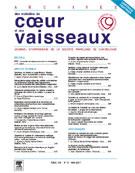04-39 - NORMAL VALUES OF REFLECTED HIGH-INTENSITY MOTION SIGNALS (RIMS) IN DIFFERENT PEDIATRIC AGE GROUPS - 09/04/08
Objectives: In our earlier study we have proved the usefulness of Reflected high intensity Motion signals (RIMS) in pediatric age groups in the evaluation of global left ventricular function. In the current study our aim is to set normal values of RIMS in different pediatric age groups.
Materials and methods: 35 healthy volunteers of pediatric age groups up to 18 yrs were examined. They were categorized into three different age groups, 0-6 yrs, 7-12 yrs and 13-18 yrs. The values of systolic velocity component (Sa), diastolic velocity components (Ea, Aa and Ea/Aa ratio), and time intervals (RIMS-ivct, RIMS-et, RIMS-ivrt) were obtained in these subjects by placing the cursor of a pulse wave Doppler, 3-5 cm lateral to the mitral annulus in the pulmonary tissue in the apical 4 chamber view.
Results: the obtained normal values are shown in the table. On analyzing these values, it was noticed that, as age increases there is a steady increase in the systolic components Sa, RIMS-ivct, RIMS-et, and diastolic components Ea and Aa. At the same time a steady decrease in Ea/Aa ratio can be seen. These dynamics indicate a move towards adult values of RIMS.
Conclusion: Normal values of Reflected High Intensity Motion signals in pediatric age groups are set. As age increases the RIMS values demonstrates a transition towards adult normal values. These values can be used in echocardiographic diagnostics to analyze global left ventricular functions in various cardiac pathologies in children.
© 2007 Elsevier Masson SAS. Tous droits réservés.
Vol 100 - N° 12
P. 1081 - décembre 2007 Retour au numéroBienvenue sur EM-consulte, la référence des professionnels de santé.

